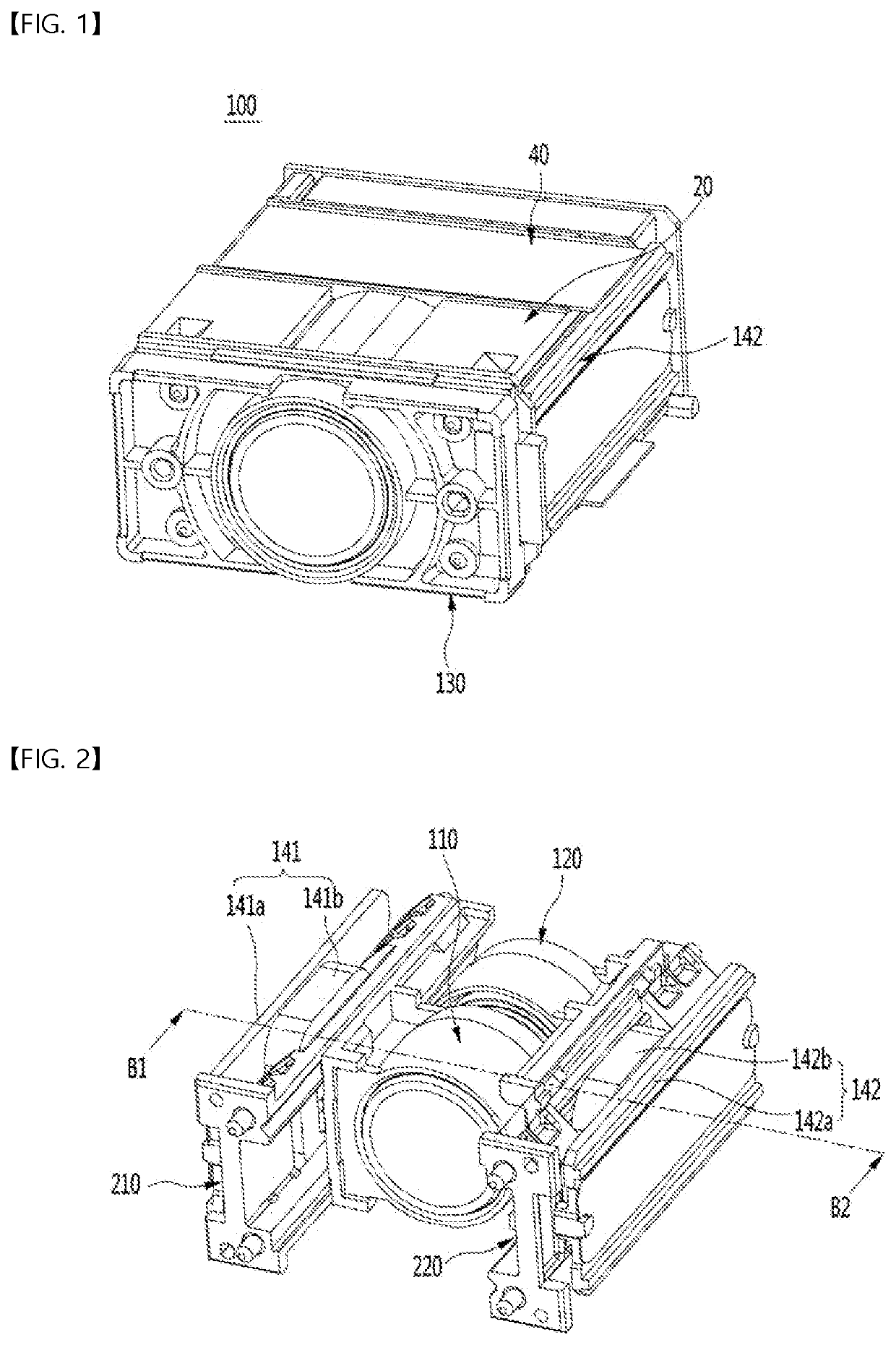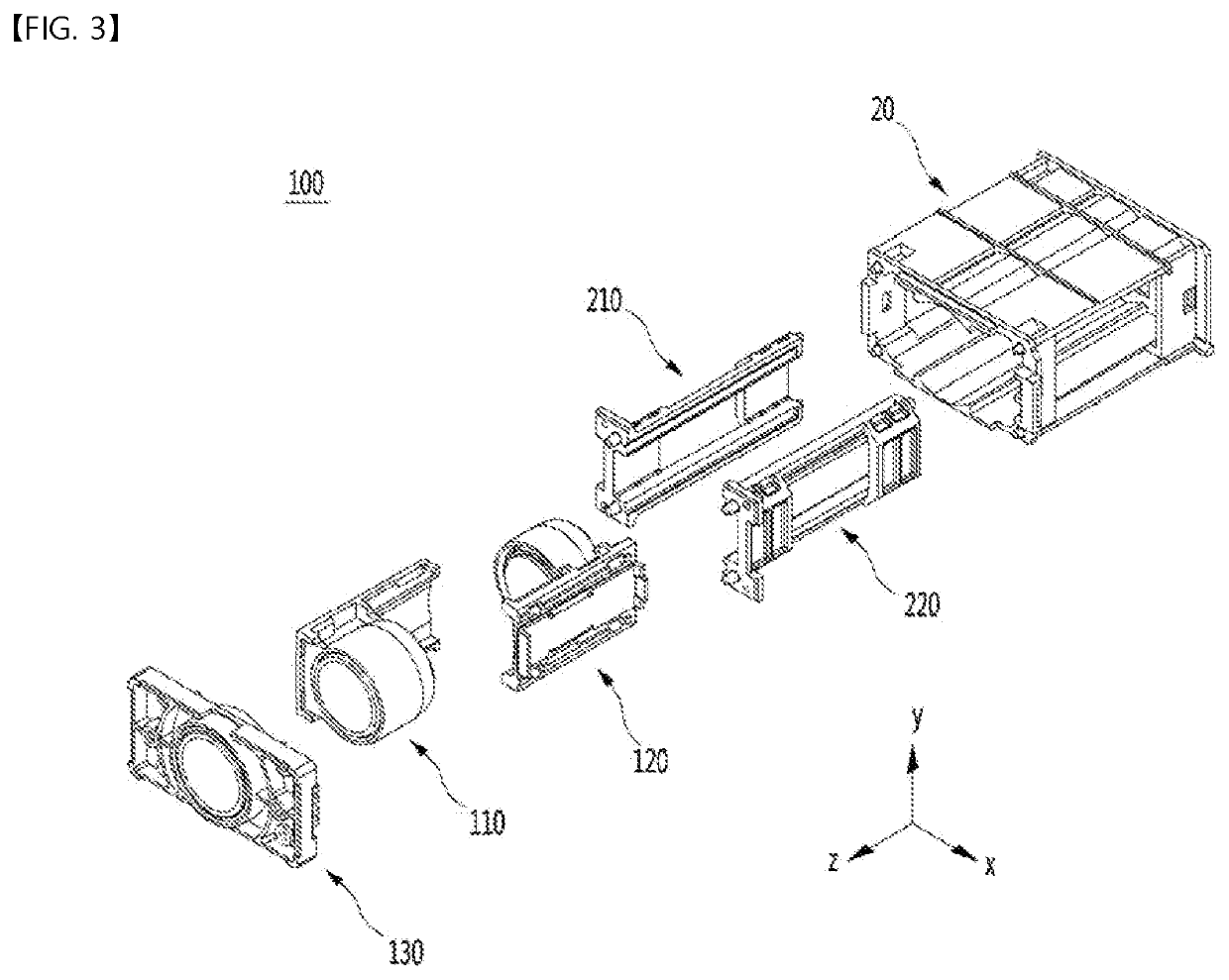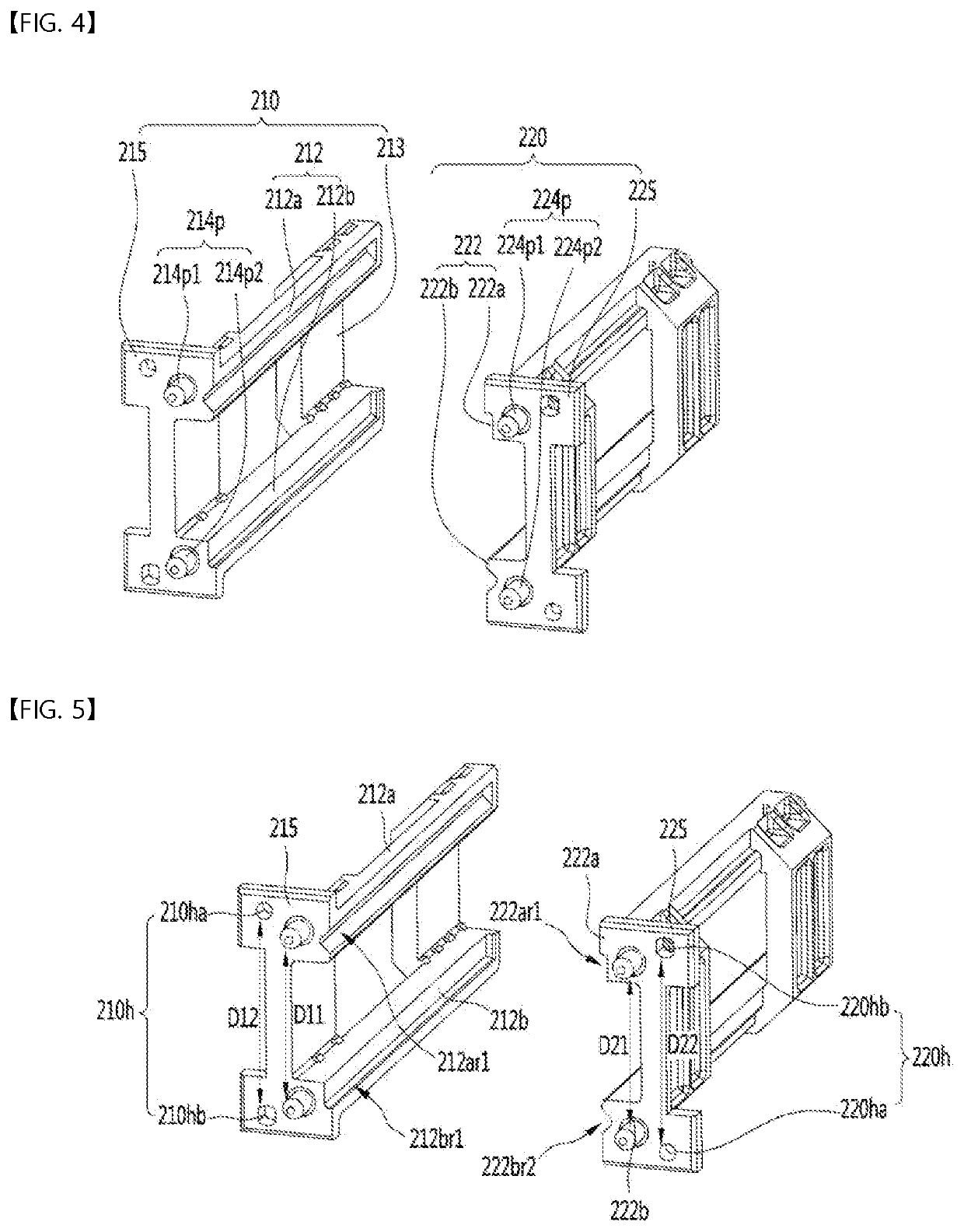Camera module and camera apparatus comprising same
- Summary
- Abstract
- Description
- Claims
- Application Information
AI Technical Summary
Benefits of technology
Problems solved by technology
Method used
Image
Examples
embodiment
[0134]FIG. 1 is a perspective view of a camera module 100 according to an embodiment, FIG. 2 is a perspective view in which a part of the configuration of the camera module according to the embodiment shown in FIG. 1 is omitted, and FIG. 3 is an exploded perspective view in which a part of the configuration of the camera module according to the embodiment shown in FIG. 1 is omitted.
[0135]Referring to FIG. 1, the camera module 100 according to the embodiment may include a base 20, a circuit board 40 disposed outside the base 20, a fourth driving part 142, and a third lens assembly 130.
[0136]FIG. 2 is a perspective view in which the base 20 and the circuit board 40 are omitted in FIG. 1, and referring to FIG. 2, a camera module 100 according to an embodiment includes a first guide part 210, a second guide part 220, a first lens assembly 110, a second lens assembly 120, a third driving part 141, and a fourth driving part 142.
[0137]The third driving part 141 and the fourth driving part ...
PUM
 Login to View More
Login to View More Abstract
Description
Claims
Application Information
 Login to View More
Login to View More - R&D Engineer
- R&D Manager
- IP Professional
- Industry Leading Data Capabilities
- Powerful AI technology
- Patent DNA Extraction
Browse by: Latest US Patents, China's latest patents, Technical Efficacy Thesaurus, Application Domain, Technology Topic, Popular Technical Reports.
© 2024 PatSnap. All rights reserved.Legal|Privacy policy|Modern Slavery Act Transparency Statement|Sitemap|About US| Contact US: help@patsnap.com










